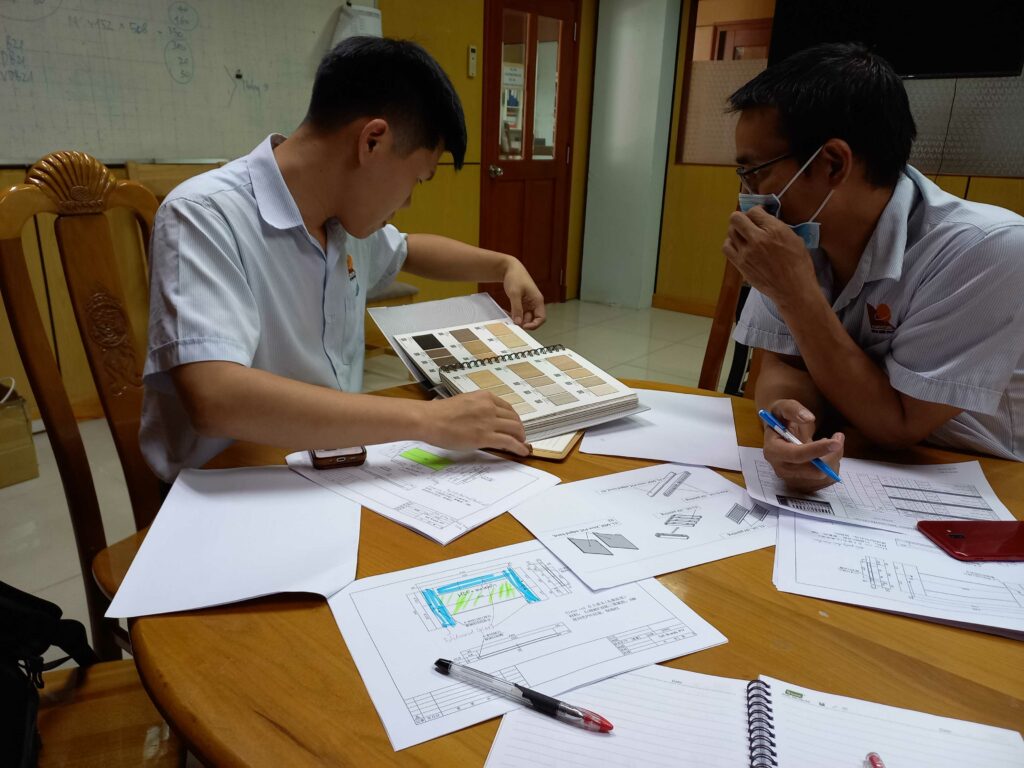This article is a guest post from our friends at Cosmo Sourcing. We are working with Cosmo Sourcing to develop the DIY Sourcing Kit.
In the intricate realm of product sourcing and procurement, one component stands as a linchpin to ensuring the journey from conception to the consumer is smooth and satisfactory — the supplier. Engaging with competent, reliable, and ethical suppliers is imperative to maintain the quality and delivery timelines to uphold the brand’s reputation and ensure customer satisfaction. However, vetting suppliers can often morph into a complex endeavor, laden with challenges ranging from geographical and linguistic barriers to varying industry standards and ethical practices.
Embarking on the supplier assessment trail without a clear roadmap can lead to costly missteps. There are many factors to consider, and each supplier has merits and demerits. Hence, having a structured evaluation framework is indispensable to making informed decisions.
This blog post aims to be a structured guide for businesses to rate and review suppliers efficiently when sourcing and procuring products. We will explore establishing clear evaluation criteria, researching suppliers, conducting thorough audits, leveraging technology for assessment, collecting and analyzing feedback, and the significance of continuous monitoring and re-evaluation.
By adhering to a well-crafted supplier assessment strategy, businesses can significantly mitigate risks, foster stronger supplier relationships, and ensure a steady supply of high-quality products. So, let’s navigate through the essentials of mastering supplier assessment, ensuring your sourcing and procurement endeavors are built on a solid foundation of trust, quality, and reliability.

Establishing Supplier Evaluation Criteria
Before you dive into the search for potential suppliers, it’s paramount to establish clear evaluation criteria. This set of standards will serve as your compass in navigating the extensive supplier landscape. Here’s a breakdown of crucial evaluation facets:
A. Quality Compliance:
- Certifications (e.g., ISO, BSCI, CE):
- Look for suppliers with recognized industry certifications that validate their commitment to quality and ethical practices.
- Ensure the certifications are current and issued by reputable bodies.
- Product Quality and Consistency:
- Assess the quality of samples and ensure they align with your product specifications.
- Inquire about their quality control processes to ensure consistency in product quality over time.
B. Pricing:
- Competitiveness of Pricing:
- Evaluate the supplier’s pricing model to ensure it’s competitive.
- Understand the value proposition offered; cheaper isn’t always better if it compromises quality.
- Transparency in Pricing:
- Ensure the supplier provides a clear breakdown of costs, including any additional fees or charges.
- Evaluate how changes in raw material prices or other external factors affect pricing.
C. Delivery Timeliness:
- On-Time Delivery Track Record:
- Investigate the supplier’s track record for on-time delivery.
- Request references or case studies to validate their claims.
- Flexibility in Handling Rush Orders:
- Assess the supplier’s capacity and flexibility to handle rush orders or scale production as needed.
- Understand the lead times and how they compare with your project timelines.
D. Communication and Responsiveness:
- Language Competency:
- Evaluate the language competency of the supplier to ensure clear communication.
- Ascertain the availability of a dedicated account manager or contact person.
- Response Time:
- Gauge the responsiveness of the supplier to inquiries and problem-solving.
- Understand their process for handling issues and resolving disputes.
E. Ethical Practices:
- Labor Practices:
- Ensure the supplier adheres to fair labor practices.
- Verify compliance with local labor laws and international labor standards.
- Environmental Compliance:
- Inquire about the supplier’s environmental policies and practices.
- Assess compliance with environmental regulations and standards.
With well-defined evaluation criteria, you’re better equipped to embark on the supplier research and evaluation journey. This framework simplifies the evaluation process and ensures the selected suppliers align well with your organizational values and project requirements.
Researching And Finding Suppliers:
A comprehensive evaluation starts with research to create a shortlist of potential suppliers. Here’s a roadmap to guide your initial supplier research process.
A. Online Directories and Platforms:
- B2B Marketplaces (e.g., Alibaba, ThomasNet):
- Utilize B2B marketplaces to discover a vast array of suppliers.
- Check suppliers’ ratings, reviews, and transaction history to gauge their reliability.
- Engage with suppliers to get a feel for their communication and responsiveness.
- Industry Directories:
- Industry-specific directories can provide a curated list of suppliers.
- Utilize filters to narrow down suppliers based on your specific requirements, such as location, certifications, and product range.
B. Trade Shows and Expos:
- Networking Opportunities:
- Trade shows provide a platform to meet suppliers face-to-face.
- Collect business cards and catalogs and discuss your requirements in person.
- Live Product Inspection:
- Inspect products firsthand to assess their quality.
- Engage with suppliers to understand their manufacturing process and quality control measures.
C. Recommendations and Referrals:
- Industry Peers:
- Network with industry peers to get recommendations based on their experiences.
- Discuss the challenges faced and how the suppliers handled them.
- Online Reviews and Ratings:
- Explore online review platforms to read about other buyers’ experiences with the suppliers.
- Look for recurring issues in reviews, such as delays in delivery or quality inconsistencies.
You can build a well-rounded understanding of the supplier landscape by employing a mix of online research, in-person interactions at trade shows, and leveraging recommendations from industry peers. This initial research is pivotal in creating a shortlist of suppliers who align with your sourcing and procurement goals, setting the stage for more in-depth evaluation and engagement.
Conducting Supplier Audits And Inspections
Once you have a shortlist of potential suppliers from your research, the next decisive step is conducting supplier audits. These audits are crucial in assessing the on-ground reality of the suppliers’ operations, ensuring they adhere to your established criteria.
A. On-Site Audits:
- Factory Inspections:
- Schedule visits to the suppliers’ facilities to inspect the manufacturing process, quality control measures, and overall working conditions.
- Utilize a standardized inspection checklist to ensure consistency in evaluation across different suppliers.
- Quality Control Procedures:
- Dive deep into the suppliers’ quality control procedures to ascertain their commitment to delivering high-quality products.
- Assess their process for identifying, reporting, and correcting defects.
B. Virtual Audits:
- Digital Tours:
- In scenarios where on-site visits are not feasible, arrange digital tours of the suppliers’ facilities using video conferencing tools.
- Ensure to cover all critical areas, including manufacturing lines, quality control stations, and warehouses.
- Document Review:
- Request essential documents such as certifications, testing reports, and quality control records for review.
- Utilize secure channels for document sharing and maintain a well-organized repository for future references.

Conducting thorough supplier audits provides an insightful peek into the suppliers’ operational capabilities, adherence to quality standards, and ethical practices. Whether through on-site audits or virtual assessments, these evaluations are instrumental in making well-informed supplier selection decisions. They validate the information provided by suppliers and unveil any potential red flags that could become significant issues down the line. Therefore, a meticulously conducted audit is a cornerstone in building a robust supplier relationship, ensuring a seamless product sourcing and procurement process.
Utilizing Technology To Manage Suppliers
In the modern global market, leveraging technology is indispensable for streamlining the supplier evaluation process and ensuring a transparent and collaborative relationship with your suppliers. Here’s how technology can significantly contribute to your supplier assessment strategy:
A. Supplier Management Software:
- Tracking Performance Metrics:
- Employ Supplier Management Software (SMS) to keep track of key performance metrics such as delivery timeliness, quality compliance, and pricing competitiveness.
- The automated tracking and analytics SMS enable real-time insight into suppliers’ performance, aiding in prompt decision-making.
- Storing and Analyzing Audit Data:
- Use SMS to store and organize all the data collected during supplier audits.
- Analyzing this data over time helps identify trends and potential improvement areas, ensuring the supplier continues to meet your established criteria.
B. Online Review Platforms:
- Collecting and Analyzing Supplier Reviews:
- Engage with online platforms where supplier reviews are aggregated, providing a broad perspective on the supplier’s reputation and performance in the industry.
- Analyze reviews for recurrent issues or praise, which could indicate the supplier’s strengths and weaknesses.
- Benchmarking Supplier Performance:
- Compare the performance metrics of your suppliers with industry benchmarks available on review platforms or industry reports.
- Benchmarking aids in understanding where your supplier stands compared to industry standards and competitors, which is instrumental in making informed supplier selection and negotiation decisions.
Utilizing technology significantly eases the often complex and multi-faceted supplier evaluation process. Supplier Management Software and online review platforms are valuable tools for collecting and organizing critical data and deriving actionable insights from this data. In a fast-paced business environment, having access to real-time data and analytics is crucial for maintaining a competitive edge and ensuring a fruitful and transparent relationship with your suppliers. Hence, investing in the right technology platforms is a wise move toward mastering supplier assessment in product sourcing and procurement.

Collecting and Analyzing Feedback:
Gathering feedback from various stakeholders involved in the sourcing and procurement process is critical for a rounded supplier performance assessment. It provides insights from different perspectives and helps in making well-informed decisions. Here’s how to structure the feedback collection and analysis process:
A. Internal Feedback:
- Cross-Functional Surveys:
- Distribute surveys to cross-functional teams interacting with suppliers—such as procurement, quality control, operations, and logistics—to gather their feedback.
- Tailor the survey questions to capture insights on supplier communication, problem-solving ability, adherence to deadlines, and quality standards.
- Regular Review Meetings:
- Conduct regular internal review meetings to discuss supplier performance.
- Facilitate open discussions to capture both quantitative and qualitative feedback.
B. External Feedback:
- Customer Surveys:
- Solicit feedback from customers regarding the quality and performance of the sourced products.
- Monitor online reviews and ratings to gauge customer satisfaction and gather feedback.
- Supplier Self-Assessment:
- Encourage suppliers to self-assess their performance and provide feedback regarding the working relationship.
- Compare supplier self-assessments with internal and customer feedback to identify any discrepancies or areas of alignment.
C. Analyzing Feedback:
- Data Compilation and Analysis:
- Compile the feedback data collected through various channels into a centralized system for analysis.
- Utilize data analytics tools to identify trends, areas of excellence, and opportunities for improvement.
- Gap Analysis:
- Conduct a gap analysis to compare the actual performance of suppliers against the established evaluation criteria.
- Identify gaps that need to be addressed to enhance supplier performance and meet organizational goals.
D. Actionable Insights:
- Performance Improvement Plans:
- Based on the analysis, develop performance improvement plans for suppliers.
- Share the feedback and the improvement plans with the suppliers and work collaboratively to address the identified gaps.
- Performance Recognition:
- Recognize and reward suppliers who meet or exceed the evaluation criteria, fostering a culture of continuous improvement and mutual growth.
Collecting and analyzing feedback forms the basis for a dynamic supplier evaluation system, promoting transparency, continuous improvement, and strong supplier relationships. Engaging various stakeholders in this process enriches the evaluation with diverse insights and nurtures a shared responsibility and collaboration culture in achieving the sourcing and procurement objectives.
Continuous Monitoring and Re-evaluation:
Supplier performance isn’t a static metric; it evolves with changing market conditions, internal process improvements, or, sometimes, negligence. Therefore, a one-time assessment is far from sufficient. Here’s how to approach continuous monitoring and re-evaluation:
A. Regular Performance Reviews:
- Scheduled Assessments:
- Establish a schedule for regular supplier performance reviews, be it quarterly, bi-annually, or annually, based on the criticality of the supplier relationship and products supplied.
- Utilize the data collected through supplier management software to evaluate performance against the established criteria.
- Feedback Loops:
- Share the evaluation results with the suppliers, highlighting the areas of excellence and those requiring improvement.
- Encourage open discussions to understand the root cause of any issues and work collaboratively towards solutions.
B. Issue-Based Evaluations:
- Prompt Assessments:
- In the event of a significant issue, such as a quality failure or delivery delay, conduct prompt assessments to understand the underlying causes.
- Evaluate the supplier’s response to the issue, the corrective actions taken, and their effectiveness in preventing recurrence.
- Impact Analysis:
- Analyze the impact of issues on your operations, costs, and customer satisfaction.
- Utilize this analysis to guide future supplier evaluations and decisions.
C. Re-evaluation upon Significant Changes:
- Change in Management or Processes:
- In case of significant changes at the supplier’s end, like changes in management or manufacturing processes, re-evaluate the supplier to ensure continued alignment with your standards.
- Understand how these changes might affect your products’ quality, cost, or delivery timelines.
- Market Evolution:
- As market conditions evolve, re-evaluate your criteria and supplier performance to ensure they continue to meet your organizational needs and industry standards.
- Explore new suppliers who might offer better terms or innovative solutions as market dynamics change.
Continuous monitoring and re-evaluation are cornerstones of a robust supplier management strategy. They ensure sustained performance and foster a culture of continuous improvement and openness with your suppliers. By committing to regular assessments and maintaining an open line of communication, you build a more collaborative and fruitful supplier relationship that contributes positively to your sourcing and procurement objectives.
Final Thoughts // How To Rate And Review Suppliers
Navigating the labyrinthine realm of supplier sourcing and procurement is a nuanced endeavor that requires a robust and comprehensive approach to rating and reviewing suppliers. The steps delineated in this guide — establishing a precise set of evaluation criteria, harnessing the power of modern technology for data-driven assessments, conducting rigorous on-site or virtual audits, ensuring an ongoing mechanism of monitoring, and valuing feedback from an array of stakeholders — are quintessential to foster a landscape of meticulous supplier assessment.
Undeniably, the essence of a successful procurement strategy lies in the bedrock of strong, transparent, and mutually beneficial relationships with suppliers. These relationships are transactional and instrumental in crafting a procurement narrative that reflects quality, timeliness, and trust. The meticulous supplier evaluation process, as elucidated in the preceding sections, serves as a linchpin in developing such relationships. It’s not an overstatement to say that the ripple effects of a well-rounded supplier assessment strategy significantly contribute to streamlining the procurement process, ensuring an unwavering commitment to quality, and engendering a culture of accountability and continuous improvement.
Furthermore, with its ever-evolving dynamics, the market’s erratic nature necessitates an ongoing, vigilant evaluation process to ensure that the supplier base remains agile, reliable, and aligned with the overarching organizational objectives. It’s about crafting a resilient and sustainable supply chain that can withstand the vicissitudes of the market and thrive amidst them. Every supplier interaction, every audit conducted, and feedback collected is a cog in the larger machinery of supplier relationship management, each playing a pivotal role in advancing the organization’s procurement ethos.
Moreover, as organizations steer towards a global procurement model, the significance of a meticulous supplier assessment process becomes even more pronounced. It’s about engendering a procurement ecosystem reflective of global best practices, industry standards, and a commitment to ethical sourcing. The roadmap towards such an ecosystem is laden with challenges. Still, with a structured approach to supplier evaluation, organizations are better poised to navigate these challenges and propel their procurement strategy toward success and growth.
The discourse around supplier evaluation is not a mere procedural requisite; it’s a strategic imperative underpinning modern-day organizations’ success and growth narrative. As we step into an era of global supply chains and procurement networks, the principles of supplier evaluation, as delineated in this guide, serve as a beacon, illuminating the path toward procurement excellence. Hence, it’s incumbent upon organizations to invest the requisite human and technological resources to master the art and science of supplier evaluation, thereby paving the way for a prosperous and enduring procurement legacy.
Cosmo Sourcing: Your Gateway To The Best Manufacturers in Vietnam and China
Are you looking to unlock the massive manufacturing potential of Vietnam and China for your business? Cosmo Sourcing is your golden ticket to a realm filled with reliable, cost-effective, high-quality manufacturing solutions. With us by your side, you won’t have to navigate the complex network of suppliers alone; we are your dedicated partner in bridging the gap between your business and the premier manufacturers in Vietnam and China.
We don’t just connect you with any manufacturers; we ensure they are the crème de la crème, meticulously vetted to meet international quality standards and ethical manufacturing practices. Forget the uncertainties and risks of dealing with trading companies; we build direct partnerships with factories, ensuring a transparent, smooth, and rewarding sourcing experience.
With Cosmo Sourcing, you’re not merely outsourcing your manufacturing needs; you’re gaining a trustworthy partner invested in your success. Our seasoned team, with its in-depth market knowledge, is your compass in the bustling manufacturing hubs of Vietnam and China, guiding you toward the optimal solutions tailored to your specifications and budget.
The global market waits for no one, and every moment wasted is an opportunity missed. Let’s catapult your production to the next level with the unmatched manufacturing prowess of Vietnam and China. Take the decisive step towards uncompromised quality, competitive pricing, and a seamless sourcing journey. Contact Cosmo Sourcing today, and let’s turn your manufacturing goals into a reality that propels your business forward globally!




